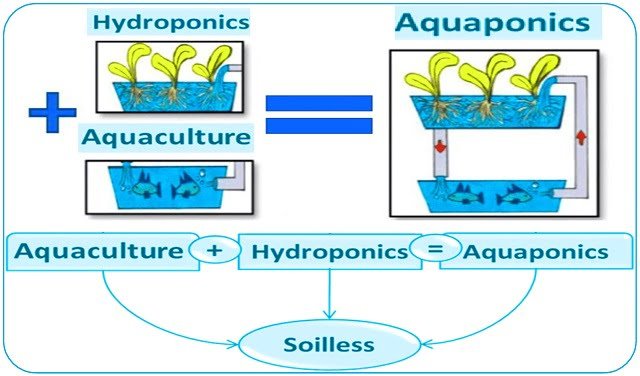
A study published by researchers from the National Institute of Oceanography and Fisheries (NIOF), Alexandria University, Tanta University, Fujian Agriculture and Forestry University, Damanhour University, and King Salman International University explored the potential of using a novel fertilization strategy to enhance tilapia farming: the combination of sludge from fish farming in biofloc systems (BFT-S) with sugar beet pulp (SBP).
The study focuses on the strategic use of organic fertilizers, particularly those derived from agricultural and aquaculture by-products, to improve the sustainability of freshwater farming systems.
The challenge: finding sustainable and eco-friendly solutions
Conventional aquaculture practices often heavily rely on chemical fertilizers, which can lead to water pollution and environmental degradation.
In this context, organic fertilizers derived from natural sources offer a promising pathway for sustainable aquaculture. Sludge generated in biofloc aquaculture systems contains valuable nutrients but may also harbor harmful contaminants. The Biofloc Technology (BFT) provides an innovative solution by converting waste into microbial biomass, minimizing waste discharge, and improving water quality.
On the other hand, sugar beet pulp (SBP), a by-product of the sugar industry, is rich in polysaccharides and exhibits excellent nutrient-binding properties.
When combined, biofloc sludge and SBP can potentially enhance nutrient availability for tilapia while minimizing environmental contamination risks.
The solution: A bio-based approach
The study, published in the journal Aquaculture, investigated the impact of different fertilization strategies on Nile tilapia, a popular aquaculture species. These strategies included:
- Control: No fertilizers.
- Fish farming sludge: Sludge from conventional aquaculture systems.
- BFT sludge: Sludge from biofloc systems.
- BFT-S + SBP: A combination of BFT sludge and sugar beet pulp.
- Fish-S + SBP: A combination of conventional fish farming sludge and sugar beet pulp.
Results: Improved growth and health
The study found that the combination of BFT-S + SBP significantly enhanced:
Stay Always Informed
Join our communities to instantly receive the most important news, reports, and analysis from the aquaculture industry.
- Water quality: Higher oxygen levels, lower ammonia, and reduced heavy metal concentrations.
- Fish growth: Increased final body weight, weight gain, and specific growth rate.
- Digestion: Improved activity of key digestive enzymes (protease, amylase, lipase), leading to better nutrient absorption.
- Immune function: Enhanced levels of white blood cells, lymphocytes, and monocytes, indicating a stronger immune system.
- Antioxidant defenses: Increased activity of antioxidant enzymes (superoxide dismutase, catalase), protecting fish from oxidative stress.
- Reduced heavy metal accumulation: Lower levels of heavy metals in fish tissues (liver, gills, muscle), ensuring safer, higher-quality fish for consumers.
Benefits for fish farmers
The findings have significant implications for tilapia farming, enhancing the sustainability and efficiency of this activity. Key benefits include:
- Improved water quality: The combination of BFT-S and SBP results in superior water quality, with higher dissolved oxygen levels, lower ammonia, and reduced toxic compounds, creating a healthier aquatic environment.
- Reduced heavy metal accumulation: This strategy effectively reduces cadmium (Cd), lead (Pb), and other toxic metals in water and fish tissues, ensuring food safety and improving fish health.
- Enhanced growth performance: BFT-S + SBP significantly boosts growth rates, feed conversion efficiency (FCR), and survival rates, lowering feed costs and increasing production per cycle.
- Improved fish composition: Fish treated with BFT-S + SBP have higher crude protein and lower moisture content, indicating better nutritional quality and higher commercial value.
- Optimized digestion: Enhanced digestive enzyme activity leads to more efficient nutrient utilization, supporting better growth and overall health.
- Strengthened immune system: Improved hematological and biochemical parameters, including increased red blood cells, hemoglobin, and hematocrit, contribute to better oxygen transport capacity.
Environmental sustainability
This study presents a method to repurpose aquaculture and sugar industry by-products, such as fish sludge and sugar beet pulp, into an efficient organic fertilizer. This approach reduces waste disposal into the environment, minimizes chemical fertilizer use, and promotes circular economy principles in tilapia production.
The Future: Further research and innovation
While the study highlights the significant potential of BFT-S + SBP, further research is needed to:
- Understand molecular mechanisms: Investigate the specific pathways through which this fertilization strategy enhances fish growth and health.
- Optimize the system: Fine-tune application rates of BFT-S and SBP for optimal results.
- Explore broader applications: Assess the effectiveness of this strategy in other aquaculture species and systems.
Conclusion
This research provides valuable insights into sustainable and eco-friendly fertilization strategies in aquaculture. The combination of BFT-S and SBP holds promise as a valuable tool for improving tilapia growth, health, and overall sustainability in aquaculture practices. By adopting these innovative approaches, we can ensure a more sustainable and responsible future for aquaculture and food production.
Contact
Mohammed F. El Basuini
Department of Animal Production, Faculty of Agriculture, Tanta University
Tanta 31527, Egypt.
Email: mohamed.elbasuni@agr.tanta.edu.eg, mohammed.elbasuini@ksiu.edu.eg
Akram Ismael Shehata
Department of Animal and Fish Production, Faculty of Agriculture (Saba Basha), Alexandria University
Alexandria 21531, Egypt.
Email: akramismael2@gmail.com, akramismael2@alexu.edu.eg
Reference
Sallam, G. R., Fayed, W. M., Alaa, M., Fayek, M., Teiba, I. I., Alhoshy, M., Tefal, E., El Basuini, M. F., & Shehata, A. I. (2025). Fertilization sources fallout: Unveiling the impacts on growth, metal accumulation, and physiological responses in Nile Tilapia, Oreochromis niloticus. Aquaculture, 598, 741987. https://doi.org/10.1016/j.aquaculture.2024.741987
Editor at the digital magazine AquaHoy. He holds a degree in Aquaculture Biology from the National University of Santa (UNS) and a Master’s degree in Science and Innovation Management from the Polytechnic University of Valencia, with postgraduate diplomas in Business Innovation and Innovation Management. He possesses extensive experience in the aquaculture and fisheries sector, having led the Fisheries Innovation Unit of the National Program for Innovation in Fisheries and Aquaculture (PNIPA). He has served as a senior consultant in technology watch, an innovation project formulator and advisor, and a lecturer at UNS. He is a member of the Peruvian College of Biologists and was recognized by the World Aquaculture Society (WAS) in 2016 for his contribution to aquaculture.




